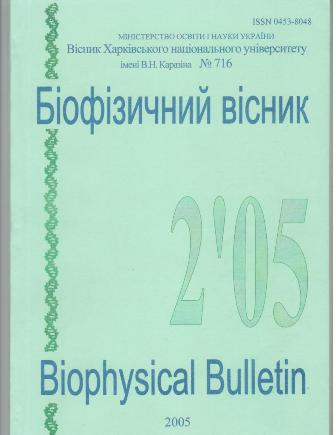Thioflavin t behavior in lysozyme - lipid systems
Abstract
The applicability of thioflavin T (ThT) to the detection of amyloid-like aggregates formed in the membrane environment was evaluated using a lysozyme-lipid model system. It was found that ThT is capable of partitioning into lipid bilayers composed of zwitterionic (1- palmitoyl -2-oleoyl-sn-glycerol-3-phosphocholine (POPC)) and anionic (1-palmitoyl-2-oleoyl-sn-glycerol-3-phosphoglycerol (POPG)) phospholipids. The ability of ThT to associate non-specifically with lysozyme in its native state was uncovered. These properties of ThT may impose limits on the use of this dye for the identification of membrane-induced fibrillar structures.
Downloads
References
Khurana R, Ionescu-Zanetti C. Biophys. J. 2003;85:1135-44.
Dobson CM. Trends Biochem. Sci. 1999;24:329-32.
YipCM, Darabie AA, McLaurin J. J. Mol. Biol. 2002;318:97-107.
Fernandez A, Berry RS. Proc. Natl. Acad Sci. USA. 2003;100:2391-6.
Krebs MRH, Bromley EHC, Donal AM. J. Struct. Biol. 2005;149:30-7.
Zhao H, Tuominen EKJ, Kinnunen PKJ. Biochemistry. 2004;43:10302-7.
Mui B, Chow L, Hope MJ. Meth. Enzymol. 2003;367:3-14.
Bartlett G. J. Biol. Chem. 1959;234:466-8.
LeVine H. III. Arch. Biochem. Biophys. 1997;342:306-16.
Voropai ES, Samtsov MP, Kaplevskii KN, Maskevich AA, Stepuro VL, Povarova OI, et al. J. Appl. Spectr. 2003;70:868-74.
Authors who publish with this journal agree to the following terms:
- Authors retain copyright and grant the journal right of first publication with the work simultaneously licensed under a Creative Commons Attribution License that allows others to share the work with an acknowledgement of the work's authorship and initial publication in this journal.
- Authors are able to enter into separate, additional contractual arrangements for the non-exclusive distribution of the journal's published version of the work (e.g., post it to an institutional repository or publish it in a book), with an acknowledgement of its initial publication in this journal.
- Authors are permitted and encouraged to post their work online (e.g., in institutional repositories or on their website) prior to and during the submission process, as it can lead to productive exchanges, as well as earlier and greater citation of published work (See The Effect of Open Access).





